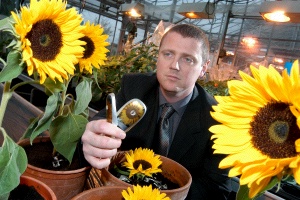Feb 13 2008
Researchers at the University of Warwick's Warwick Manufacturing Group, in conjunction with PVAXX Research & Development Ltd, have devised a novel way to recycle discarded mobile telephones - bury them and watch them transform into the flower of your choice.

Mobile telephones are one of the most quickly discarded items of consumer electronics. Rapid changes in technology and taste means customers constantly upgrade their phones leaving behind more and more discarded phones. However there is increasing pressure on all manufacturers by policy makers to find ways of recycling discarded goods, and also pressure from some customers who want to feel they are making an environmentally sensitive purchase. This new research by engineers in the Warwick Manufacturing Group at the University of Warwick provides a novel way that a mobile telephone manufacturer can meet these demands.
The University of Warwick team, led by Dr Kerry Kirwan, have worked with hi tech materials company PVAXX Research and Development Ltd and Motorola to create a mobile telephone case or cover that when discarded can simply be placed in compost in such a way that just weeks later the case will begin to disintegrate and turn into a flower.
Two researchers have made two key changes to the case or cover of the mobile to achieve this result:
A special formulation of PVAXX Research and Development Ltd's biodegradable polymer range was developed in conjunction with materials researchers at Warwick, that produces a high quality finish but which also biodegrades easily in compost.
Secondly the engineers at the University of Warwick have created a small transparent window in the case or cover in which they can embed a seed. The seed is visible to the environmentally aware mobile phone user but will not germinate until the phone cover or case is recycled. The researchers have drawn on the specialised seed expertise of researchers in the University of Warwick's horticultural research arm - Warwick HRI - to identify which types of seeds would perform best in this situation. For the first prototype telephones they have used dwarf sunflower seeds.